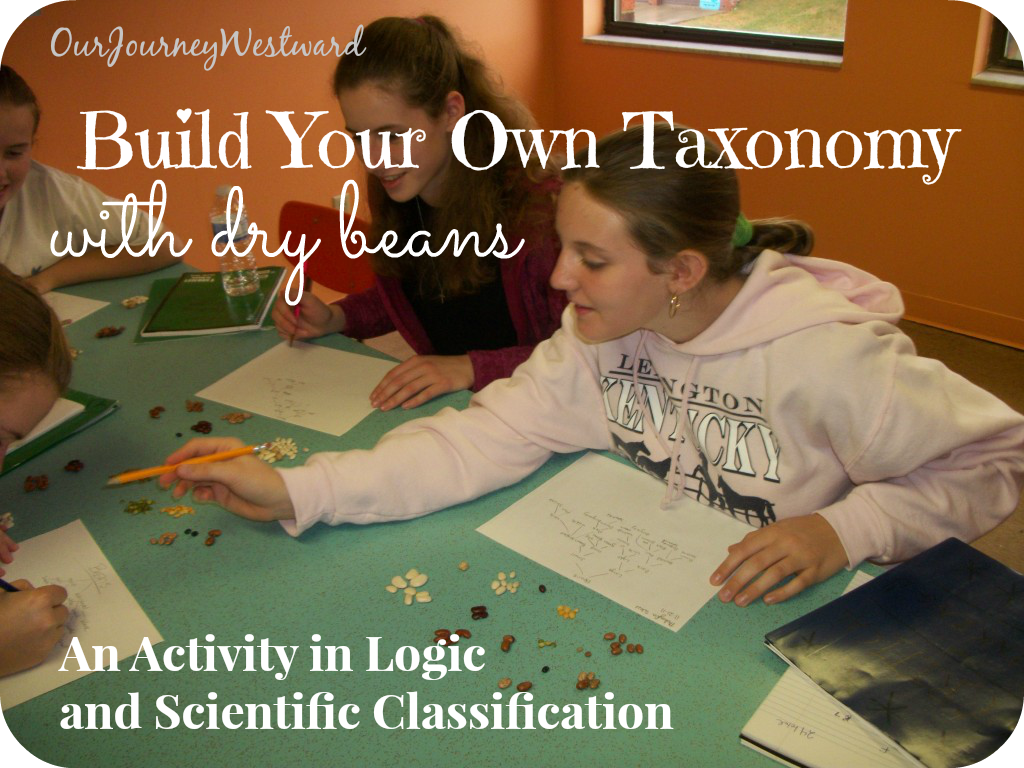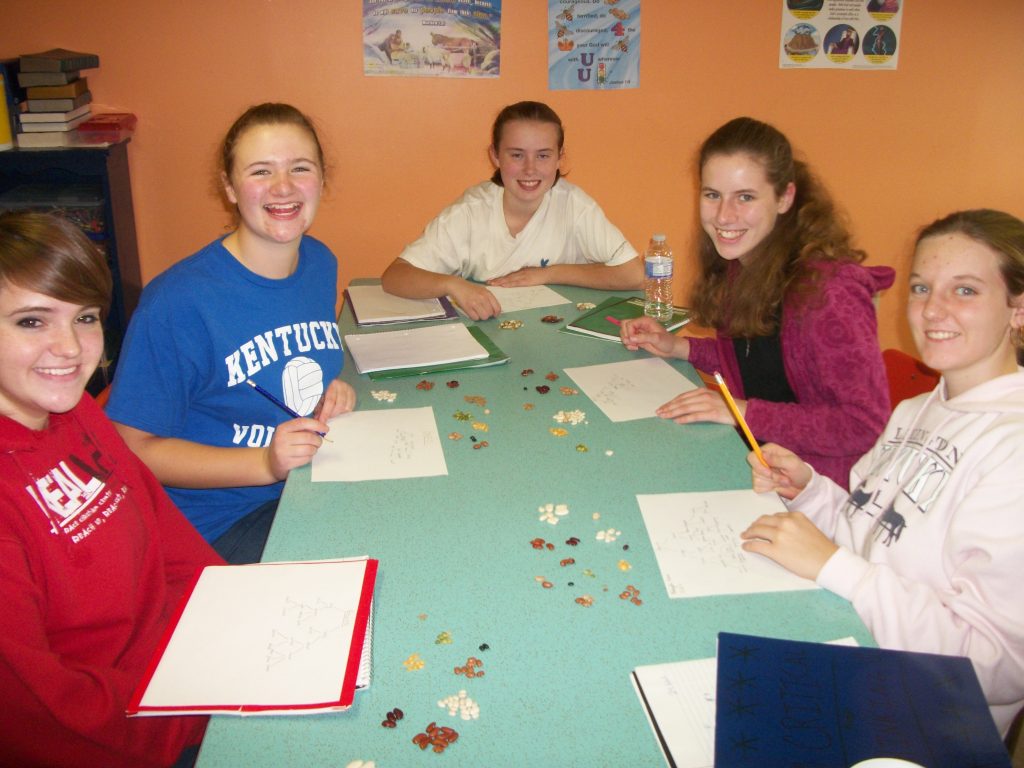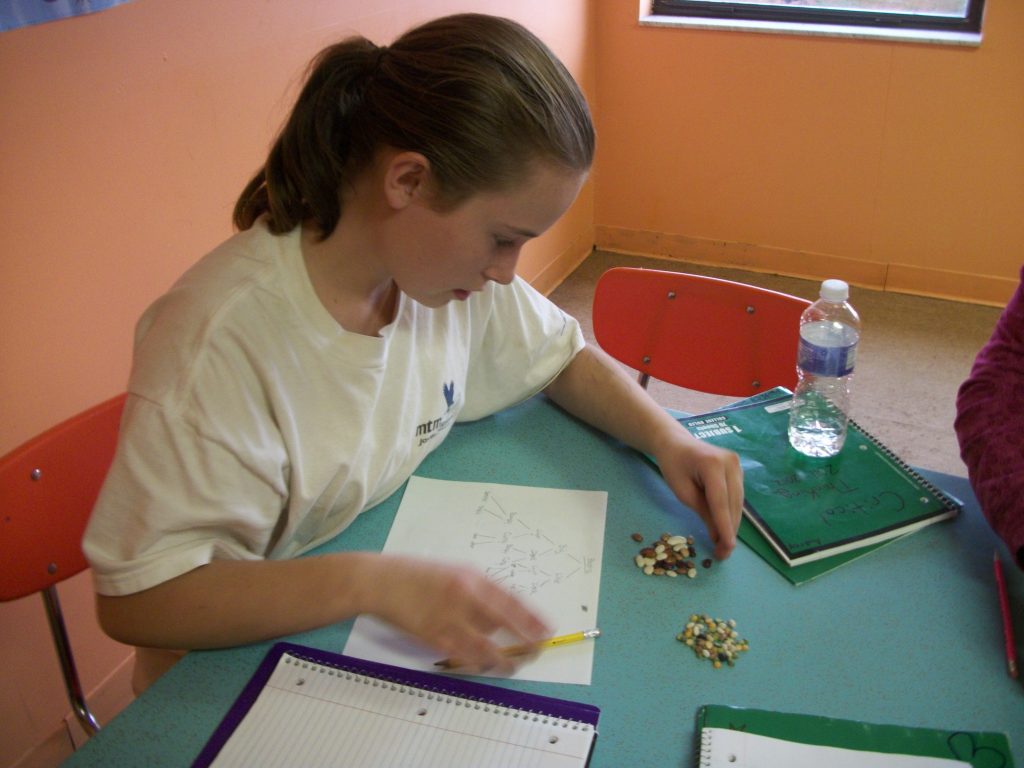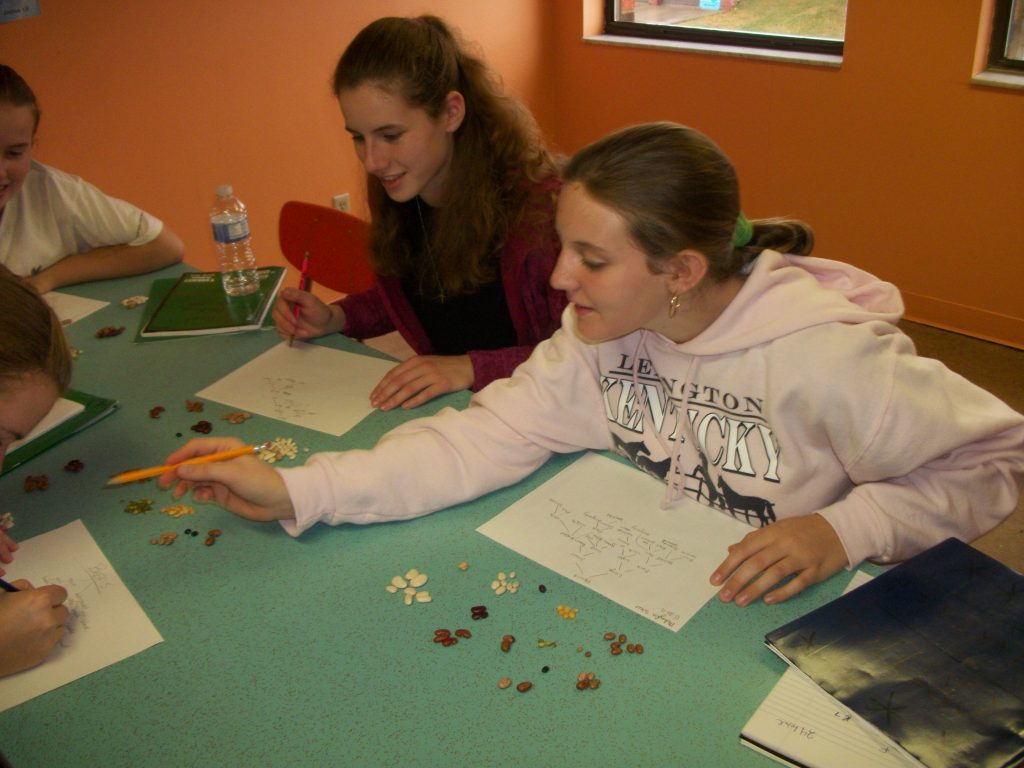Bean Classification: A Logic and Science Activity for High School
Logic and critical thinking easily meet science in this bean classification activity. Using a simple 16-bean soup mix, middle and high school students can develop their own systems of classification.
It’s such a great way to practice classification and re-classification strategies based on debatable characteristics. Speaking of debate, the activity provides a great opportunity for students to consider the ideas of others. In classifying and debating, it’s easy to see the challenges that scientists have faced for years in creating standardized classification systems for plants and animals.

This post contains affiliate links.
Classification Activities for Older Students
A few months ago, I wrote a post describing a candy classification activity. It takes advantage of copious amounts of candy (from Halloween, perhaps) to practice sorting candy based on each student’s ideas for candy categories. The candy science activity can be used with children as young as the elementary years to begin understanding the idea of categorizing and re-categorizing based on changing characteristics.
My middle school and high school logic classes at co-op did a similar activity with a 16-bean soup mix. Not only are the beans less expensive and take up less room than candy, but they are also slightly more difficult to sort for varied characteristics. That makes them the perfect tool for creating classification charts with older kids.

Talking About Taxonomies with Students
Before jumping into the bean classification activity, discussing the concept of taxonomies with students is important. The most obvious taxonomies include the plant kingdom and the animal kingdom.
Using the posters linked above, I showed them how plants and animals are systematically classified into groups. We noted how each broad group is further classified into smaller groups until each plant and animal is eventually in its own category.
Picture Books About Scientific Classification
I love to read picture books about taxonomies and classification with the students. Yes, I even read picture books with middle and high school students. It’s an easy way to introduce the concepts and promote understanding quickly.
Here are some books that you might consider reading.
The Bean Classification Activity
Decide whether your students will work alone or in small groups. I allowed the middle schoolers to work with partners but asked the high schoolers to work alone.
Open the bag of 16-bean soup mix and give each student a small pile of beans with at least a couple of every bean variety. The easiest way to do this is to prepare baggies of beans ahead of time. Otherwise, it takes quite some time to be sure each student or group of students has multiples of every type of bean.

Challenge the students to create a classification system for their beans, making sure each bean ends up in its own category in the end. They may use any characteristics to sort the beans with only two rules:
- Use creative characteristics (not simply colors).
- Don’t break every bean down into its own group in the first step.
With each new separation based on a new characteristic, they should note it on a chart. In the end, they should be able to verbalize the full “taxonomy” of each bean.
For example, the taxonomy of a green split pea might be: bean -> small -> round -> flat -> green -> green split pea
That means the green split peas started in the big group of beans. They became part of the “small” group when the beans were categorized into groups of small, medium, and large beans. The “small” group of beans was then further classified into “round” and “long”. The green split peas made it into the “round” group. The “round” group was further classified into “flat” and “rounded”. The green split peas made it into the “flat” group. The “flat” group was further categorized into “green” and “yellow” groups. This became the final classification because the green split pea was finally in its own group by itself. At that point, it was named “green split pea”.
Differences in the Classification Charts
You should expect that each bean classification chart will be unique. That’s because each student (or group of students) will likely begin with different characteristics of separation. So, when one person first separates the beans into “large” and “small” groups, another student might use the categories of “dark” and “light” or “oval” and “round”.
Use this opportunity to discuss how Carolus Linnaeus “invented” the modern classification system of plants and animals in the 1700’s. However, it’s important to note that, even today, scientists don’t always agree about exact placements in the taxonomy.

Scientist Roundtable for Debate
We decided to create a scientist roundtable to determine the best organization system for the beans. Everyone went around the table and told the first characteristic they chose to separate the beans. If four out of five people (or groups) all used the characteristic of shape, we voted to make that the “official” first level of characterization. If two people used one characteristic and three people used another, each person had to “argue” their case for using that characteristic. Then, we all voted as to the “official” characterization. We continued through each level of the taxonomy in this manner until we came up with an “official scientist-certified bean taxonomy”.
All of the students loved this activity! Besides science, logic, and critical thinking, it was a great lesson in chart making, debate, and cooperation!
Don’t worry if you don’t have the opportunity to do this with a class of students. It works great with one or more at home, too!
Other Posts You Might Like







and it also help the logic grows. Nice activity!
Awesome project! I will be borrowing this idea. Thanks. 🙂
We are doing Botany at the moment using Apologia. I really love how students look so engaged in the classification activity in your co-ops. Thanks for sharing.
My high school girls at co-op that year were the most joyful bunch of girls! I {heart} them!
Do you happen to have a syllabus or lesson plans describing how you used these resources? Did you start with one book then start another? Or did you randomly pick from all of them what you wanted to do each week? This looks so interesting. I have been trying to nail down an idea for a co-op class.
So sorry. I meant to leave this comment on your logic co-op class blog post.
Leah, do you mean the resources from this post about my logic classes? If so, I did randomly pick from several resources each week depending on their interests and abilities. Typically, we learned and practiced a logical fallacy & did some logic puzzles each meeting. Unless I brought logic games. On game days, we didn’t have time for other lessons, too. Let me know if I didn’t answer the question you were asking.
No worries. I figured it out. 🙂
Thank you, Cindy. You did answer my question.